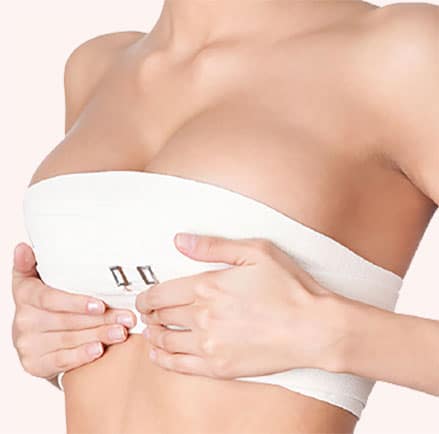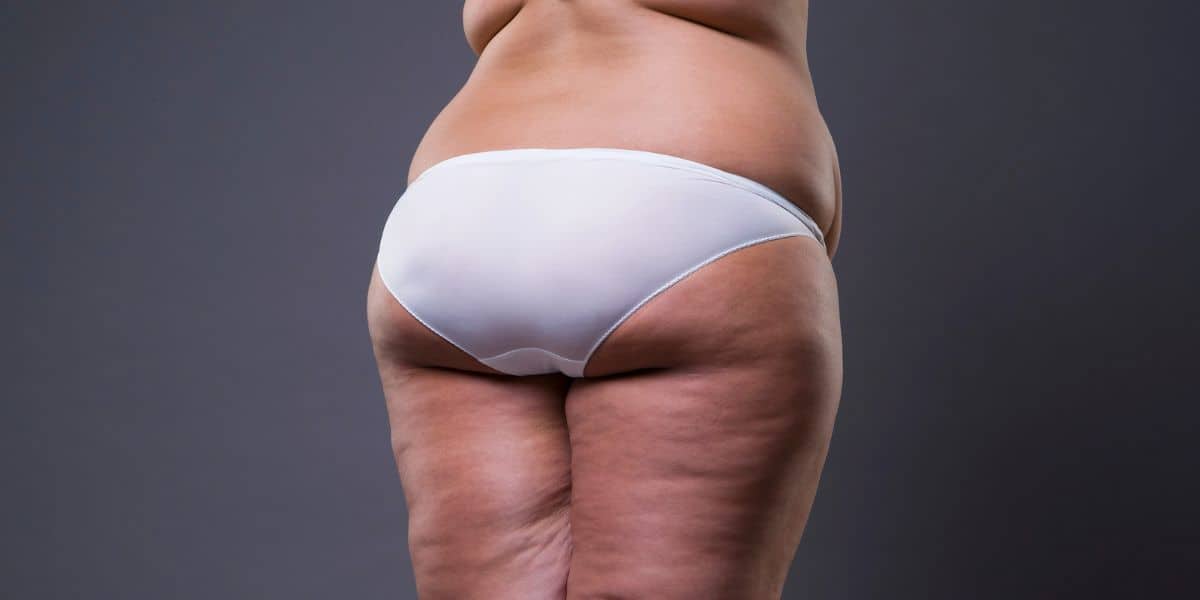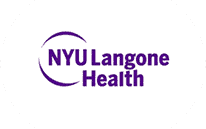Breast Lift (Mastopexy)
Gravity takes its toll on everything
Whether it be from age, pregnancy, weight loss, or some other life changes, it’s not fun when your breasts start to sag. Luckily, there is a safe treatment for sagging breasts to a more youthful, perky appearance.
As a woman in a largely male-dominated field, I bring a more sensitive approach to plastic surgery in addition to my years of experience. My goal is to help patients of all ages, genders, and backgrounds safely achieve their appearance goals and restore their self-confidence.
What is a breast lift?
A breast lift (medically known as mastopexy) is a cosmetic surgery procedure that raises sagging breasts to a firmer, perkier natural shape. It can also fix asymmetry between the breasts, lift drooping areolas to a more raised position, and correct the size of excessively large or asymmetric areolas.
For some patients, a breast lift pairs well with breast augmentation or breast reduction. A breast lift can actually slightly decrease breast size because it works by removing excess skin. So, if you’re insecure or would like larger breasts, we can discuss if breast augmentation is an appropriate addition to your breast lift. Augmentation can be achieved through saline or silicone breast implants or through liposuction and fat transfer.
Excessively large breasts can result in physical and psychological discomfort. If desired, we can reduce the overall breast size while lifting and creating a more aesthetically pleasing shape.
During your initial consultation, we’ll discuss your goals and what procedures best suit your needs.
A breast lift (or other breast enhancement) is often included in our “mommy makeover.” For people unhappy with their post-pregnancy body, we can discuss a collection of cosmetic surgery procedures that can help reach your post-pregnancy body goals. (A “mommy makeover” may include a tummy tuck, reverse tummy tuck, body contouring, Brazilian butt lift, or facial rejuvenation, to name a few.) If you’re considering multiple surgical procedures, we can discuss them during your consultation. I’ll never push a patient toward a surgery I don’t 100% believe will benefit them.

Am I a good candidate for a breast lift?
This is the most important question I have to answer. I will always be 100% honest with you about the risks and benefits.
Ideal breast lift candidates are:
- generally healthy
- non-smokers
- adults with fully-developed breasts
- finished having children and/or breastfeeding
- realistic in their expectations
Mastopexy Procedure
The first step of any plastic surgery procedure is a consultation with me. We’ll go over your medical history, breast size and shape, and goals. I’ll also inform you of the most likely benefits for you and the possible risks. It is important to me that my patients be able to make fully informed decisions.
On the day of the procedure, you’ll be given general anesthesia or sedation. Then the incision will be made based on our previously agreed upon surgical plan.
The three types of incision are:
Periareolar Incision
Also known as the “donut” lift, this incision is only made around the perimeter of the areola. It’s suitable for patients with mild-to-moderate sagging as it only allows for a moderate lift. However, it does involve the least number of incisions.
Lollipop Incision
Also known as a “keyhole” incision, this is my most commonly used incision. A periareolar incision combined with a vertical incision from the lower border of the areola to the lower fold of the breast. It allows for a powerful lift and a beautiful round shape of the breast.
Anchor Incision
This incision has the highest risk of scarring, but I try to hide the incision in the lower fold of the breast as much as possible. This incision goes around the areola, down to the lower fold, and then horizontally across the lower fold of the breast. This technique is for patients who need a significant breast lift due to excessively loose skin and heavily deflated breast tissue.
Then, the necessary reshaping and lifting will be performed to achieve your desired look. Any augmentation or reduction we agreed upon will also be performed at this point.
The incisions will be closed in multiple layers to reduce tension and minimize scarring.
Does breast lift cream work?
I get it, no one enjoys surgery. And there are plenty of ads out there for creams that claim to lift and enhance breasts without surgery.
While creams can moisturize the skin, they can’t firm up the skin enough to reverse sagging.
CALL (818) 770-7050 OR CLICK HERE TO SCHEDULE ONLINE
What is the recovery from Mastopexy surgery?
Immediately after surgery, your breasts will be covered in gauze and a surgical support bra. You may also have temporary drainage tubes. I’ll go over your recovery instructions ahead of time and you’ll be able to go home after your surgery.
You’ll be uncomfortable for a few days, but most patients manage their pain and discomfort with over-the-counter pain medication. You should be able to return to normal activities after two to three weeks. However, avoid strenuous activity for about six weeks. We’ll meet regularly for follow-ups to monitor your progress.
You’ll notice a change immediately, but your breasts will continue to settle and change over a few months.
Breast Lift Frequently Asked Questions
When can I wear a bra after a breast lift?
You’ll wear the surgical support bra for a while and will then move on to sports bras or other bras with no underwire. About six weeks after surgery, you should be able to return to normal bras.
How long after a breast lift can I sleep on my side?
In general, you’ll have to avoid sleeping on your side or stomach for two to four weeks.
Do breast lift scars go away?
The scars usually start out lumpy and red. Over time, they will fade, becoming less noticeable and, hopefully, becoming practically invisible.
Incisions will be made so that scars can be concealed by bras and swimsuit tops.
How long does a breast lift last?
The results will last a while, but might not be permanent. With age, your skin loses elasticity and may begin sagging again. Maintaining a stable, healthy weight will help maintain your results.
Larger breasts are more likely to succumb to gravity; and while many women have long lasting results, some require a touch up or even a repeat lift years down the line.
Will insurance cover a breast lift?
Insurance generally doesn’t cover cosmetic surgery. You should contact your insurance provider to see if you have any coverage options.
How much does a breast lift cost?
According to the American Society of Plastic Surgeons, the average cost for the procedure is around $4,693. This doesn’t include anesthesia, hospital costs, prescriptions, or associated expenses. I will give you an estimate of your total costs during your consultation. No surprise bills!
What are the risks of having a breast lift?
All surgery comes with some risk, but in the hands of a skilled plastic surgeon, your risk is decreased.
Some risks of mastopexy include:
- Scarring
- Changes in nipple or breast sensation
- Irregularities or asymmetry in the shape and size of the breasts
- Partial or total loss of the nipples or areolae
- Difficulty breast-feeding
Most of these are very rare. Sensation in the nipples and breast usually returns with a few weeks and breastfeeding is usually possible.
Why it’s critically important to choose a Board-Certified Plastic Surgeon
All surgeries come with some risk; we all know this. But did you know that many doctors who perform plastic surgery are not board-certified plastic surgeons?
For a surgeon to become board certified, they must have at least 14 years of higher education including special intensive training in reconstructive and cosmetic surgery.
This means that in the very unlikely event of a complication, it can be handled quickly and efficiently.Board-certified plastic surgeons have full admitting privileges at local hospitals. Non-board-certified plastic surgeons do not, thus they cannot even treat you outside of their own surgery center. Additionally, I always work with leading board-certified anesthesiologists during my procedures to ensure patient safety. Unfortunately, this is not always the case with cosmetic surgeons.
Aren’t all doctors who perform cosmetic plastic surgery procedures board-certified?
Sadly, no. Many are not certified to do the cosmetic procedures they are performing. That can lead to significant problems for any patient who has complications. It can also mean that the surgeon who performed your procedure cannot even admit you to a hospital or provide any follow-up care at the hospital.
My extensive training, board certification, and experience as a noted reconstructive surgeon serve as an assurance that my approach to surgery is ethical, safe, and effective.
Why choose Dr. Saber for a Breast Lift in the Los Angeles area?
Dr. Sepideh Saber, MD, FACS offers a more sensitive, female perspective for patients of all ages, genders, and orientations. Patients of all ages and from all walks of life have praised not only their outcomes but her caring, thoughtful approach to all types of appearance and health-related matters.
Dr. Saber graduated from Stanford University’s world-renowned medical school and did her plastic and reconstructive surgery residency at the University of Southern California (USC). She then completed a fellowship at New York University (NYU) in the extremely challenging and delicate area of hand surgery, as well as microsurgery.
To request a consultation, call (877) 205-4100 or click here to schedule a consultation online.
The practice of Dr. Saber is located in Encino, CA for patients throughout the Los Angeles area. We are also convenient to Encino, Woodland Hills, Sherman Oaks, Calabasas, Burbank, Glendale, Hidden Hills, Agoura Hills, Northridge, North Hollywood, Malibu, Topanga, Canoga Park, Reseda, Valley Glen, Chatsworth, West Hills, Winnetka, Universal City, Bel Air, Beverly Hills, Downtown Los Angeles, Silverlake, and Echo Park.
CALL (818) 770-7050 OR CLICK HERE TO SCHEDULE ONLINE

















